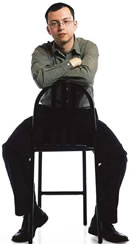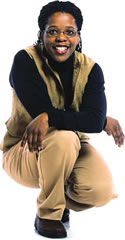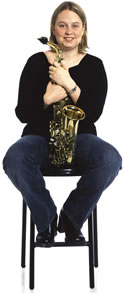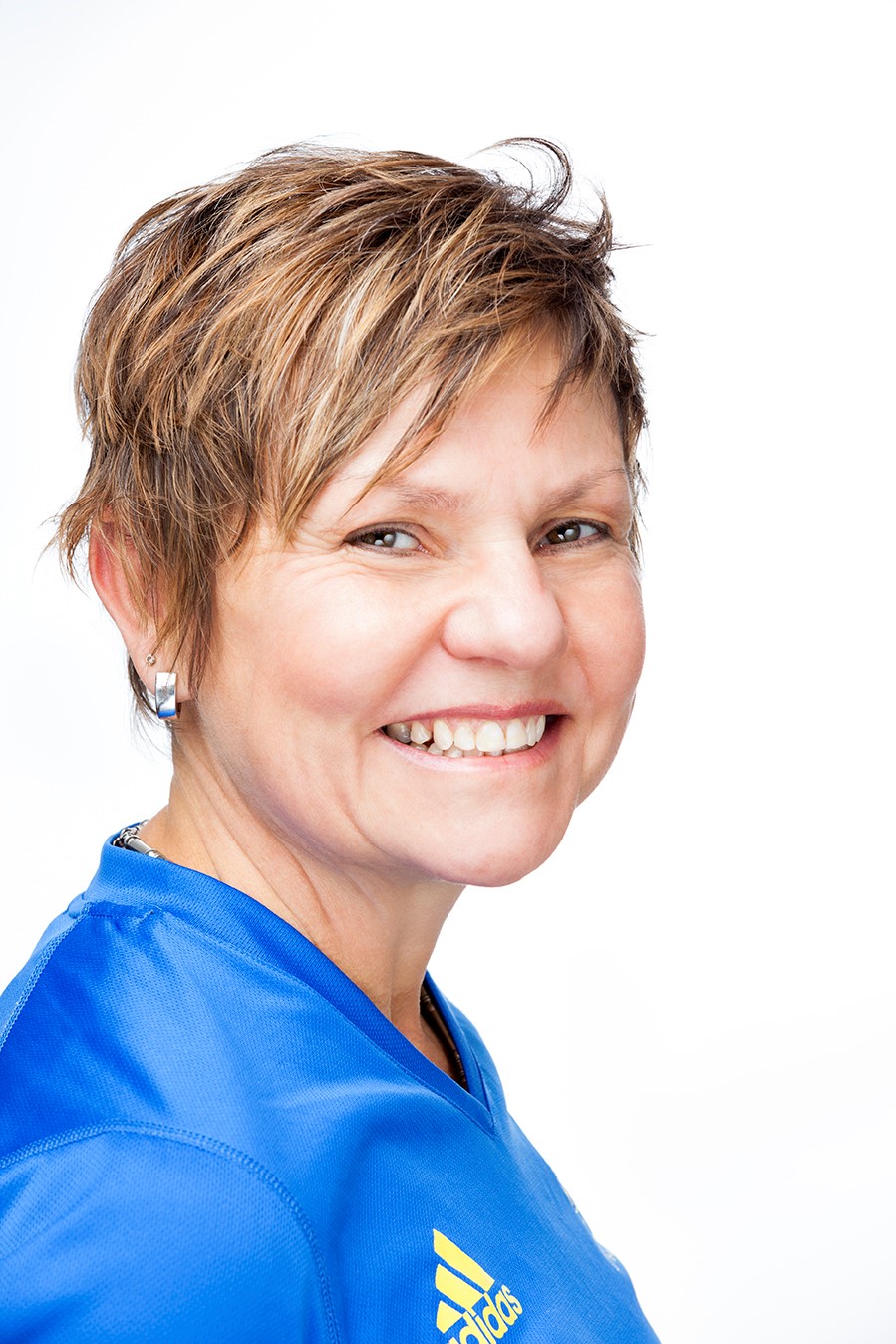In February, I spent a week skulking about U of T. I was on assignment to find out how (OK, I wondered if) U of T’s billion-dollar campaign has enhanced the student experience. Given that the university has grown by about 17,000 students since I graduated almost two decades ago, I expected an intensification of my own first “daze” at school: think of sad Nemo lost in a great big sea and you get the sopping picture.
Oh yes, U of T is massive, the Pacific Ocean of Canadian universities and the fifth largest in North America. It washes across three campuses and 684 acres, and keeps 10,301 faculty and staff and 63,109 students mired in deep and profound thought. Every year, U of T plunks its 17 academic divisions, 14 professional faculties, 10 colleges and nine fully affiliated teaching hospitals atop Maclean’s survey of universities as Canada’s leading research-intensive school – where it will not be budged.
It’s spectacular, of course, to be a big fish in a big pond churning with opportunities, ideas, passion. For undergraduates, though, the vastness could prove a tad overwhelming, even alienating. But when I trailed students to classes, toured residences and chatted to professors, I encountered quite a different experience of this big, bold world of U of T, thanks in large part to campaign dollars.
Undergraduates say that the university is becoming more intimate, accessible, inclusive, even supportive. One student told me he’s “absolutely smitten” by his studies. Another, who considered dropping out, says she discovered a program that she “loves to bits.” A frosh describes his first year on campus – in the notoriously stuffed double cohort – as “intimate, intense, exciting.” Yet another, returning to school as a mature student, says she has put her life “in U of T’s hands.” Indeed, some students apologized to me for gushing about the university.
As a well-seasoned journalist, I had a hard time writing this stuff down. Certainly, there’s much more to be done in the way of reducing class sizes, increasing student aid and improving libraries and infrastructure. But campaign dollars earmarked for students (20 per cent to bulk up financial aid; another 27 per cent to improve and add academic programs; 17 per cent to build or refurbish residences, lab spaces and classrooms) are already making a dramatic difference. Ultimately, the campaign is creating opportunities for deeper (one student said “transformative”) academic experiences.
But don’t take it from me. Read on and get the goods from the students themselves.
Dare to Dream
As a high school student, Allison Prole of Peterborough, Ont., would often arrive early for her alto-saxophone lessons in Toronto. She would spend the time walking around the Hart House grounds, listening to the music spill out and wondering what was going on behind those thick stone walls. She dreamed that one day she would attend U of T.
But Prole, now 19, never imagined that she would enter the Faculty of Music by earning a BMO National Scholarship, which would pay for four years of tuition, her first year in residence and about $2,000 a year in incidental expenses. The Bank of Montreal’s gift – the largest ever by a Canadian bank for student aid – was matched by both the Ontario government and U of T to create a $9-million endowment for scholarships, which are awarded to approximately 10 students annually.
Prole was certainly deserving. She achieved a 92.5 per cent average in her last year of high school while participating in more than a half-dozen bands and student groups. The scholarship has enabled her to focus on her studies while playing in a band and serving on the faculty’s undergraduate student association.
Overall, the campaign has boosted endowment for student aid from $68.7 million to about $500 million. For the 2003-2004 school year, U of T was able to award $48 million in bursaries and scholarships. General Motors gave $2 million (matched by U of T and the Ontario government to form a $5-million endowment) to create more than 25 scholarships for high-achieving women in financial need who are studying engineering, math or science, and for First Nations students and those with physical challenges. Larry and Marla Wasser donated $300,000 of their $500,000 gift to create nine scholarships at Innis College. These and thousands of other contributions enabled U of T to become the first university in Canada to ensure that no student would be prevented from coming to the university, or from finishing a degree, for want of financial assistance.
One chilly winter morning, I asked Prole to tour me through the Faculty of Music’s Edward Johnson Building. Between you and me, I wanted to see the faculty’s $100,000 Steinway concert grand, for no other reason than I had never seen a nine-foot-long piano up close. It too has a dream-come-true story. During a concert, a student took to the stage and made a plea for a new piano to go with its refurbished grand. Father James McConica, former president and vice-chancellor of St. Michael’s College, happened to be in the audience and responded with a donation of $50,000 in memory of his mother, a piano teacher. The gift was matched through the university’s faculty/staff donations program for a total gift of $100,000.
Prole laughs at the story. Her mother is a Grade 7 and 8 band teacher, and Prole recently revised her career goal – from performing saxophone professionally to teaching high school music or perhaps pursuing graduate studies in music education. It wasn’t a dewy-eyed decision. “There are smaller music schools where you can be a star, a big fish in a small pond, but here I realized that I wasn’t going to be the best sax player. That’s OK. I have come to realize what I am good at.”
The intense interview for the scholarship helped Prole identify her strengths. “I never thought of myself as being exceptional,” she says, “but I think they chose me for my intellectual curiosity. We talked about a range of things: music, religion, philosophy and bigger ideas. I have an interest in learning.”
We can’t get into Walter Hall to see the new nine-foot grand, because students are performing for a test. But as we crane our necks to peer through the tiny slat windows, Prole tells me about her own moment in the theatre. When U of T formally announced that the campaign had reached its $1-billion goal, Prole and 11 other Bank of Montreal scholarship winners were at the celebration. The event was chockablock with star academics, donors, top university officials and politicians. “It does help your confidence, meeting these people. They really made us feel special,” she says. “A few of the scholarship winners live in residence at Trinity and we have kind of formed a group. Everyone who lives around us has become part of that group. I’m meeting great people who are now my best friends.”
As we walk through the main foyer, Prole tells me that impromptu concerts sometimes unfold in this open space. “One day I came out of class and there was an African drumming group performing the gamelan right here in the lobby. I had never seen the instrument before. You just stumble on to these amazing things.”
Making the First Year Count Big

Ryan MacLean, 18, is part of Victoria College’s new brainchild, Vic One, which creates a first-year experience akin to Plato’s Academy. “With this program, I’m loving everything about this university,” says MacLean. “I can see this as being one of the most sought-after first-year experiences in the country.”
Launched in the fall of 2003 with the help of a $1-million bequest from the late Pauline McGibbon and a $4 million gift from the estate of Mary Mounfield, the program has space for 100 students selected on the basis of marks, extracurricular activities and a creative essay that they’re asked to write. They enter one of two streams: the Northrop Frye for the humanities or the Lester Pearson for social sciences. Two of the three required courses are intimate 20- to 25-person seminars. The third is a lecture for 50 students followed by small-group tutorials. Both streams come together every Wednesday afternoon for a plenary lecture, which has been delivered by such notables as physicist Ursula Franklin, novelist Ray Robertson and Russian ambassador Georgi Mamedov. After the lecture, the students hobnob with the luminaries over coffee.
But the discussion doesn’t stop at the door. Many Vic One students live in a dedicated residence in Burwash Hall. Outside of class, they’ve formed their own writing and study groups, hosted an open-mike night to showcase their talents and made intense friendships. “Vic One can be overwhelming in the best sense of the word,” says MacLean. “You’re immersed in the learning experience.”
I wanted in on the action, so I headed to class with MacLean. The professor is David Wright, Canada’s former ambassador to NATO. His seminar examines international events that have occurred in the students’ lifetime: the fall of the Berlin Wall, the genocide in Rwanda, the invasion of Afghanistan and Iraq. Wright just happens to have been there, so his lectures are peppered with personal anecdotes of chats with world leaders, dinners with ambassadors and high-stakes diplomatic meetings.
In today’s lecture, Wright sets this scene: after political attempts to stop former Yugoslav President Milosevic’s invasion of Albania have failed, Wright’s in a room with other NATO ambassadors and the Supreme Allied Commander Wesley Clark making the decision to bomb Kosovo. “It’s a huge thing to be involved in going over a precipice,” Wright tells his wide-eyed students, “because you can’t come back.”
Students frequently interrupt Wright to ask him questions. He interrupts his lecture to ask students questions: What would you have done if you were President Clinton? Gorbachev?
Wright’s first-hand involvement makes history not only vivid, but personal. “I’m trying to inspire the students,” says Wright. “There’s a mission here. If you are interested in an issue, individuals can make a huge difference on the world stage if they have courage, work hard and train themselves. And these are kids who can do that. They’re right at that steep upward learning curve. It’s the moment to get their interest.”
Certainly, MacLean’s hooked. He’s a first-year rep on U of T’s International Relations Society, wants to join the university’s chapter of War Child (an international organization that helps children affected by war) and has set his sights on a career in international development.
I ask MacLean how he’ll fare after he leaves Vic One and joins mainstream undergraduate studies in second year. He seems shocked by the question. To keep the spirit of Vic One alive, MacLean and other students are talking about establishing an informal Vic Two. And he seems ready to take what he’s absorbed in first year right through university, and beyond. “What I learned from this is that if you want to work hard at something, you have to be passionate about it. You have to find your passion,” he says. “Then, as Professor Wright says, you bite into it with your teeth.”
Enriching the Academic Experience

They wouldn’t let me attend the second-year required course “Stories,” part of New College’s minor in Paradigms and Archetypes – not without getting the consent of all 20 participants. The seminar, which studies both science and literary texts to analyze how narrative is constructed, invites students to bring their personal experiences and impressions to class. Members of the class have to feel absolutely comfortable speaking up. “We’ve all changed as a result of these courses,” says Alexandre Beliaev, a fourth-year commerce student. “Commerce taught me to think in new ways. These courses taught me how to grow in new ways.”
The cross-disciplinary minor was enriched and expanded with a $600,000 gift from Jungian author and psychoanalyst Marion Woodman and her husband, professor emeritus Ross Woodman (PhD 1957). The Woodmans also funded and participate in a speaker’s series that has hosted such internationally recognized Jungian thinkers as Anthony Stevens, an author and psychiatrist who practises in London, England.
Ann Yeoman, the program director, says the courses give students a methodology they can take into other disciplines – and apply to the larger world and their own lives. “We talk about the deconstruction of paradigms and archetypes, of human experience and identity,” says Yeoman who, after earning a PhD in English literature, trained at the C.G. Jung Institute in Zurich. “We explore diversities. The intention is to access the roots of theory, the way knowledge is formed, to generate new theories and new knowledge. It’s a bit scary for some students. They don’t have everything handed to them. They’re required to jump out of the box and challenge everything.”
When Beliaev first took a course with Yeoman, he made his own remarkable leap. The 22-year-old began a second undergraduate degree, in anthropology, during the summers and will pursue anthropology in graduate school at U of T. Specifically, he wants to incorporate his studies of Jung and anthropology to investigate how storytelling in a variety of marginal communities enables individuals to connect with themselves and their culture.
“My life would be very different if I hadn’t met Professor Yeoman,” he says. “My personal challenge is that I tend to think in terms of very rigid boundaries. I’m a black-and-white kind of person and I have a hard time recognizing grey. We are taught in commerce and life to solve problems, and I like clear-cut solutions. She taught me there’s a lot of ambiguity in the world. The ecstatic pleasure of living comes from contemplating on it. It’s not so much a lesson of a discipline as a lesson of life. It will be with me forever.”
Beliaev, who was born in Russia, dreams of returning to his homeland to take part in what he refers to as his country’s rebirth. “Jungian psychology tells you that you’re most useful in the place where you were born,” he says. “It’s a big motif in fairytales: the hero goes out in search of growth and then comes back symbolically to improve where he came from.”
Leading the Way

It was bound to happen. I’m talking about running into a younger version of myself. Valérie Lebreux, who hails from my hometown of Barrie, Ont., is majoring in a new program at my old school, University College (UC). And, hey, she even wants to become a writer, among other things.
But instead of my UC experience of feeling lost at sea, she describes herself as part of a close-knit, supportive community of professors and students. Together, they’re breaking new ground by participating in building a new academic field, Sexual Diversity Studies (SDS). It sprang into existence five years ago as a minor and will expand to a major in the fall of 2004.
Campaign gifts helped make the expansion possible. Mark Bonham (BCom 1982 UC) gifted a $200,000 teaching endowment, Aleck Dadson (BA 1976 UC, LLB 1980) established a scholarship and four others have made bequests in their wills. The Toronto Centre for Lesbian and Gay Studies contributed $130,000 in honour of former U of T English professor and gay activist Michael Lynch, who died of AIDS in 1991 at the age of 46. Also in the works is the Centre for the Study of Sexual Diversity, which will make U of T’s program an international leader in its field. With the rapid expansion of SDS and the future establishment of a centre, there’s a pressing need for further scholarship funding and program support.
Scott Rayter, the associate director, says SDS draws faculty from diverse fields to think about sexuality from different perspectives. To describe what SDS is all about, Rayter lists some of the questions that the program probes: “What gets labelled sexual in different times and places? How do certain labels come to mean what they mean? How meaningful are the terms? What is the relationship between sex and power?”
Rayter says the courses have fostered an accepting environment for students. “The key to our success here is that students have made friends for life. They build community,” he says. “We’re [society] still really screwed up by discussions of sexuality. Kids are still getting beat up, and they’re still hurting themselves.”
The program has an impact far beyond U of T. “A lot of students are active now in community organizations, volunteering,” says Rayter. “They take their skills and knowledge to become leaders in the community, to create a venue for changes.” Lebreux is an executive on the SDS student union, lends administrative and public-relations support to SDS as a work-study student and has visited Toronto schools as a volunteer with Teens Educating and Confronting Homophobia (T.E.A.C.H.), based out of Planned Parenthood of Toronto. “When I went to high school,” she says, “homophobia was more subtle and less explicit, but then no one was gay. Friends stayed closeted until they graduated. But homophobia is rampant now. A lot of kids experience discrimination, not even for being gay, but for being perceived as gay. They get gay-bashed anyway.”
Lebreux is uncertain whether she would have stayed at university had she not discovered SDS. “I was really unhappy. I felt isolated and marginalized,” she says. “Here, the professors are awesome. They all know me by name. The classes are smaller but they push us harder. It’s more rigorous because it’s a new field. There’s a sense of justifying our existence, but I love it to bits.”
Making U of T Home

Last year, U of T accomplished the seemingly impossible: not only did it expand first-year enrolment by 25 per cent to accommodate Grade 12 and 13 classes graduating together in Ontario’s infamous double cohort, it also continued to guarantee residence space for any first-year student who asked for it.
That required a flurry of construction: a 230-bed residence at U of T at Scarborough (UTSC), a 197-bed residence at U of T at Mississauga and a 277-bed residence at New College, all of which opened for fall of 2003. U of T spent $72 million to buy and refurbish the Colony Hotel, turning it into the 89 Chestnut Residence, which houses 1,100 students from various faculties. UC will start construction on the $24-million Morrison Hall, supported with a major gift from Russell (MA 1947) and Katherine (PhD 1979) Morrison. Woodsworth College will open a $32-million residence this spring and UTSC has another residence in the works. Many residence projects still require funding and established residences need upgrades.
So why has U of T made such a commitment to on-campus accommodation?
Reza Ketabi, a second-year human-biology student at St. Michael’s College, says residences play a huge role in organizing U of T’s undergraduate population into small social units. Indeed, residences are even broken down by “house” or “floor” (42 men live on Ketabi’s floor) and student representatives from each plan athletic, recreational and social events – all of which create opportunities to make friends and form community.
Increasingly, universities are realizing that out-of-class learning experiences and supportive living environments lead to greater success in the classroom. University of Toronto at Mississauga is pushing the envelope in this area, by creating “living-learning communities.” In a pilot project launched last year, students chose to live in a residence that appealed to one of their interests: say, multiculturalism, health, creative arts or community service. The students then worked on a year-long project that made a contribution to their area of interest.
Ketabi lives in the impressive new Sorbara Hall, a 180-student upper-year and graduate men’s residence that opened in 2001 through a generous gift from the Sorbara family. As his parents live in Paris, this is Ketabi’s only home during the school year and the 20-year-old says that he “absolutely loves it.” No wonder. His 150-square-foot single room has the vibe of a studio apartment, a view of Bay Street and soundproof walls. And he’s surrounded by friends.
Ketabi considered moving off campus in his second year, but he chose not to because he’s deeply immersed in college life. The proximity to classes and libraries gives him more time to participate in extracurricular activities while studying hard to keep his marks up to get into medical school. He coaches a soccer team, is president of the St. Michael’s College Student Union, and, judging by his stories, has not missed a St. Mike’s party this year. As he tours me around the college, he seems to know everybody. Indeed, after countless hellos and friendly exchanges, the college begins to feel like a small town.
“St. Michael’s College is known for its close-knit community,” says Ketabi. “And residence students are just more involved in activities and the life of the college…. I found that you can develop yourself really well here.”
Opening the Door Wider

If someone asks Holly Andrews-Taylor why, at age 39 and employed as a manager of information systems, she’s going to university part time, she has a quick and brilliant answer: choice.
The youngest of seven children in a mixed-race family in Toronto, Andrews-Taylor feels that her high school didn’t give her the support or guidance she needed to make good educational and career choices. “My sister was a trailblazer, but when I went to guidance to try to find some direction, no one said you’re great at this or that. They kept putting up roadblocks every time I wanted to do something. I began to think my complexion had something to do with it. My sister is lighter. You know better [than that], but it’s something you internalize. At that age, your self-esteem is not developed.”
After finishing Grade 12, Andrews-Taylor started a data-entry job that eventually led to her current position. Without a university degree, however, she has found it difficult to advance further or change career paths – she’s considering a private counselling practice or graduate school. But not having a degree, she says, has also taken a toll on her confidence.
Two older sisters, both U of T graduates, convinced Andrews-Taylor to apply to Woodsworth College’s Millie Rotman Shime Academic Bridging Program. Launched in 1967, the program received a tremendous boost from Manny Rotman in 1986 to honour his daughter, Millie Rotman Shime. The bridging year enables mature students to take one university course; if they pass, they gain automatic acceptance to continue in a degree program at U of T. Andrews-Taylor not only passed her course with a B+, she received two Waters Scholarships. The mother of two young daughters now has the confidence and financial support to take two full courses in her second year, while still working full time.
David Nimmo, the program director, says, “You see people who don’t know how good they are. On paper, they may have very little. They dropped out of studies at a time when they were young, and something may have been bothering them. Then they took themselves by the scruff of the neck and came in here. Many find that they’re very competitive with people who finished high school with good grades. We’re constantly getting e-mails from students who are finishing tops in undergraduate programs at various universities and getting graduate scholarships.”
William Waters is a case in point. The professor emeritus of management at U of T attended Woodsworth College as a part-time student in the 1950s. He went on to complete an MBA and PhD at the university, start his own company, and eventually return to U of T to teach finance and business economics. Waters has donated generously to U of T, creating in-course and graduation scholarships for students in the Academic Bridging Program and a graduate achievement award for students who completed the Transitional Year Programme (TYP), a year-long, full-time, access-to-education program. Most recently, he pledged $500,000 in matching monies to both Woodsworth College and TYP – as well as $1.5 million to the Faculty of Music – to encourage others to donate money toward admission scholarships for students. All donations, including Waters’, will be matched by the Ontario government.
In January, Andrews-Taylor found herself sitting beside Waters at a Woodsworth awards dinner. She said it was a great opportunity to thank him personally and tell him about her experiences in the bridging year. She explained that whenever she needed help – with writing skills at the Academic Writing Centre, guidance to choose courses and apply for scholarships, even assistance finding child care – she discovered “a whole support team.”
Indeed, she told Waters that she has put her life in U of T’s hands. “I intend to stick with the university. I want to be a role model for my daughters. I want them to go to U of T so they can have a choice of what they can do.”
“U of T is the top university,” says Andrews-Taylor, who recently won a seat on Governing Council to represent part-time students. “For professors to say that I’m producing at the U of T level – well, that’s acceptance.”
Margaret Webb (BA 1985 UC) is a Toronto writer.






